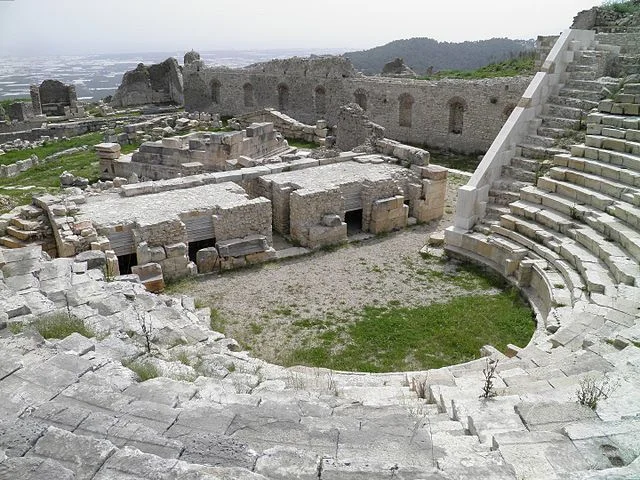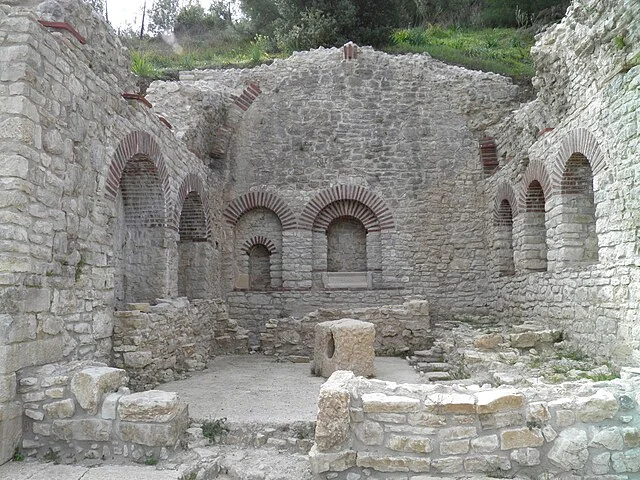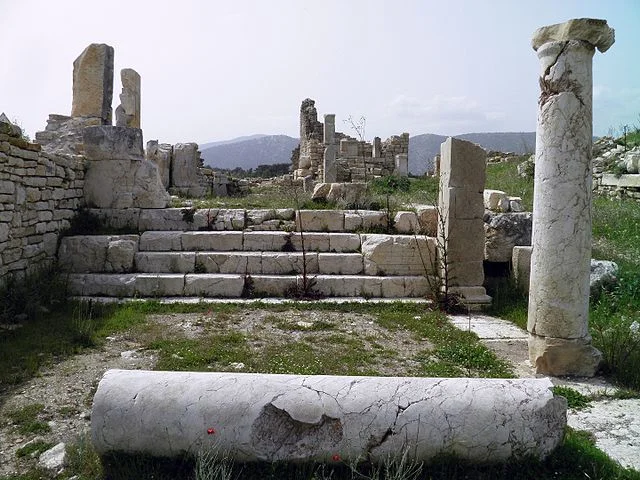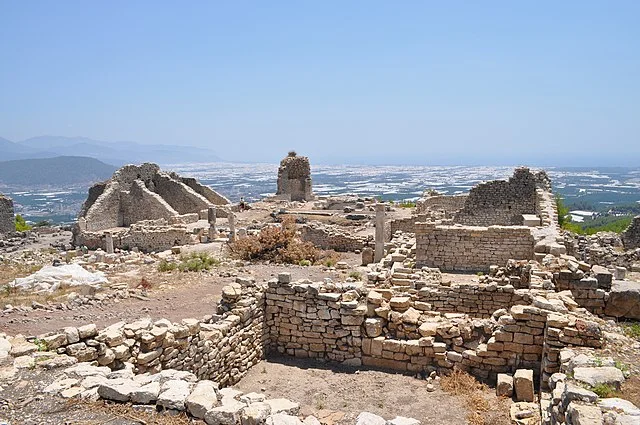Rhodiapolis was an ancient city located in the southwestern part of Turkey, within the Antalya province. Situated near the modern town of Kumluca, it lies on the slopes of the Göllük Dağı, a mountain in the Lycia region. The city is primarily known for its well-preserved ruins, which offer significant insights into the history and culture of ancient Lycia.
Get your dose of History via Email
Historical Overview

Rhodiapolis dates back to at least the 5th century BC, though some evidence suggests earlier settlement. The city was a member of the Lycian League, a federation of cities in the region, and shared the political and cultural characteristics of other Lycian cities. Its strategic location on the mountain slopes allowed for a relatively isolated yet fortified settlement. The city’s economy flourished due to its access to surrounding fertile lands and its proximity to the Mediterranean coast.
Architectural Features

Rhodiapolis features numerous monumental structures that reflect the city’s historical and cultural development. The most prominent architectural feature is its theater, which could hold around 2,000 spectators. The theater’s design follows typical Hellenistic conventions, but it also incorporates unique aspects characteristic of Lycian architecture.
In addition to the theater, the city contains a well-preserved city gate and several sarcophagi, which are considered important examples of Lycian funerary art. These sarcophagi feature reliefs that provide valuable insights into Lycian art and iconography. The city’s urban layout, with its narrow streets and terracing on the mountainside, highlights the adaption to the region’s rugged topography.
Inscriptions and Epigraphy

Rhodiapolis is rich in inscriptions, which provide significant information about its history, culture, and political structure. A large number of inscriptions have been found in the city, many of which are in the Lycian language, written in the distinctive Lycian script. These inscriptions include dedications to various gods, decrees, and records of public activities. Notably, one inscription refers to the city’s participation in the Lycian League, a sign of its active role within the larger political framework of ancient Lycia.
Decline and Abandonment

Like many ancient cities, Rhodiapolis began to decline in the Roman period, particularly from the 3rd century AD onward. The decline is likely due to a combination of factors, including changes in trade routes, natural disasters, and internal strife. By the 6th century AD, the city had largely been abandoned.
Excavations and Modern Research

Archaeological excavations at Rhodiapolis began in the 1950s and have continued intermittently. These excavations have uncovered a wealth of material culture, including pottery, inscriptions, and architectural remnants. The findings provide valuable insights into the daily life, religious practices, and political organization of the city. Today, Rhodiapolis is an important site for understanding the Lycians and their interactions with neighboring cultures, including the Greeks, Romans, and Persians.
Conclusion
Rhodiapolis stands as a significant archaeological site that offers a glimpse into the history of the Lycian civilization. Its well-preserved ruins, rich inscriptions, and strategic location provide important data for historians and archaeologists studying the ancient world.
Source:

